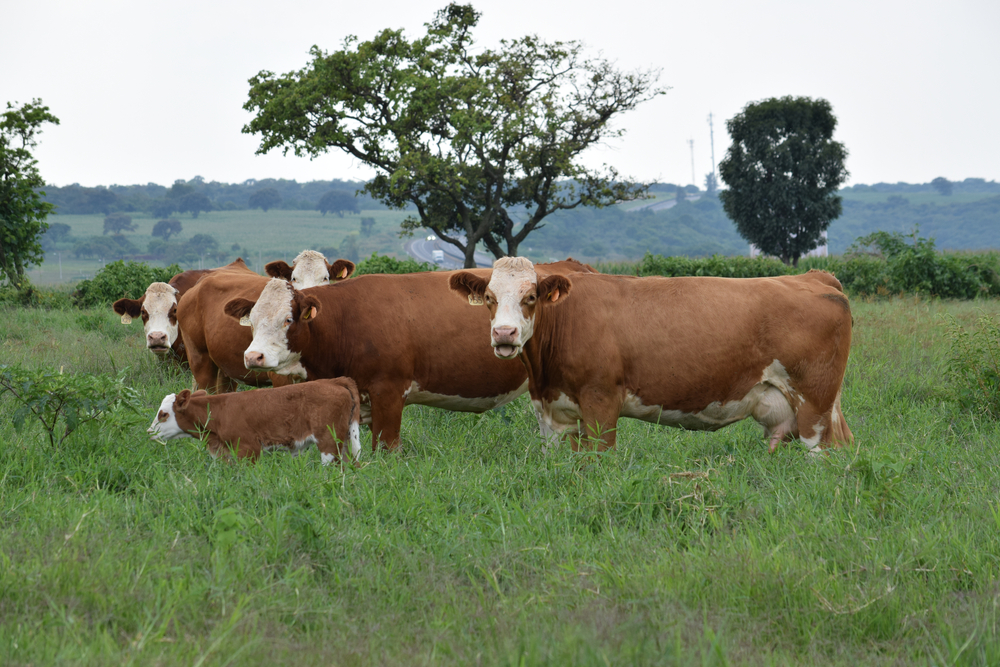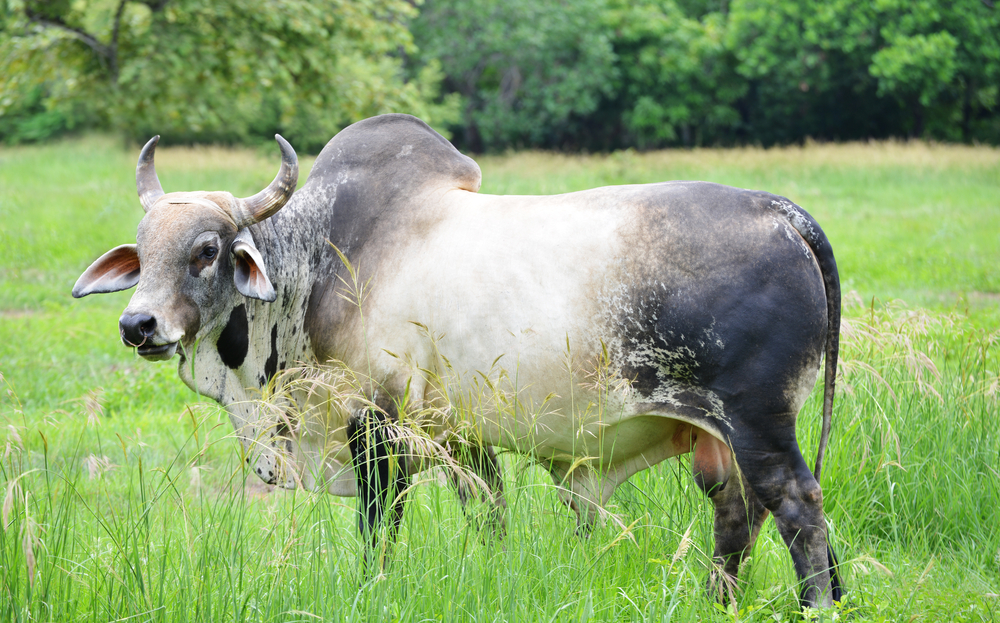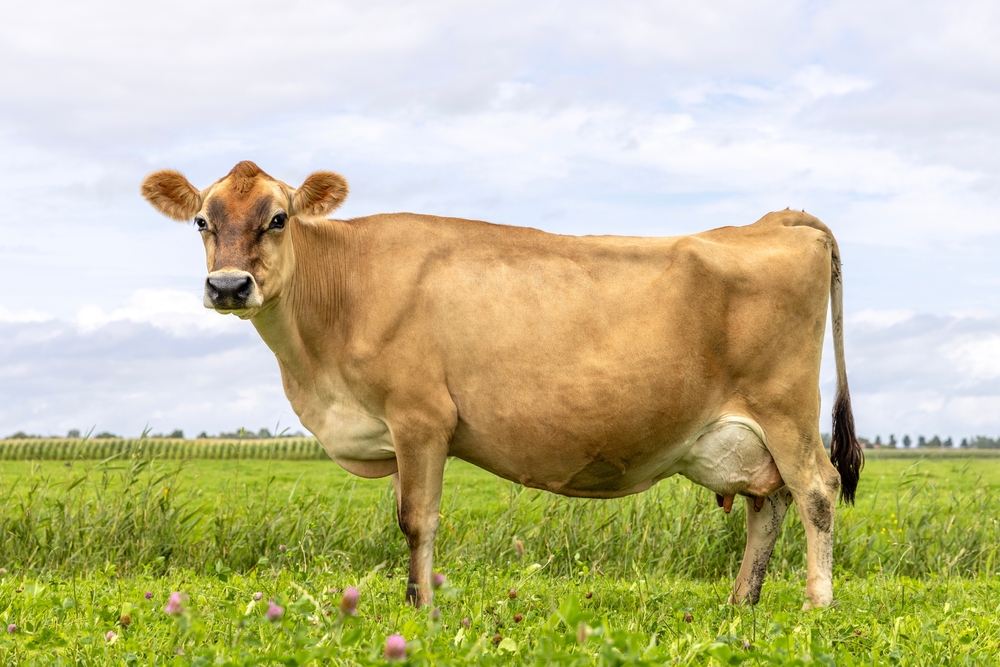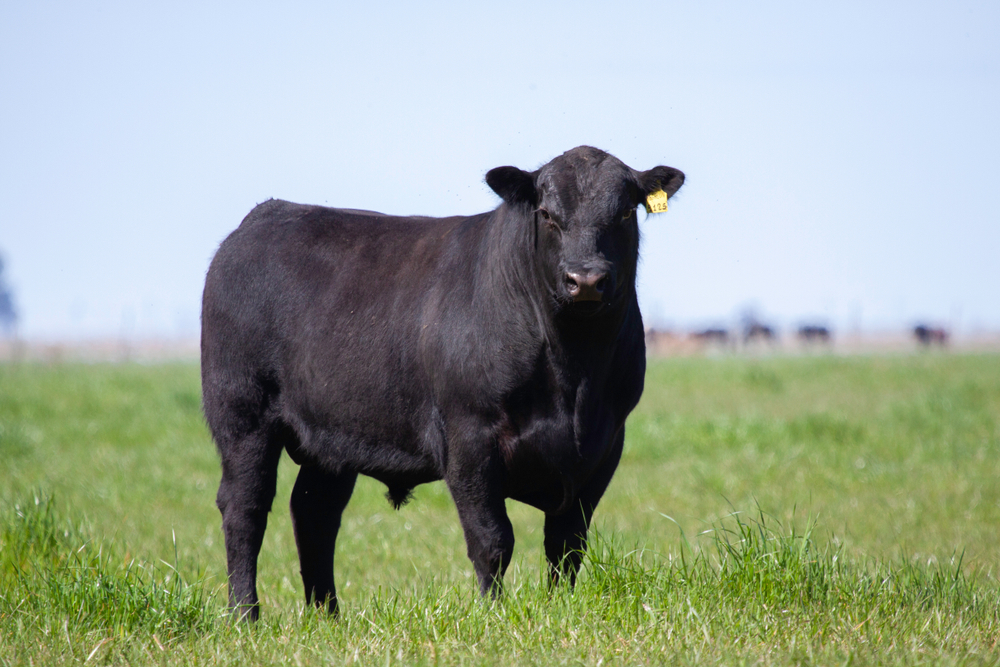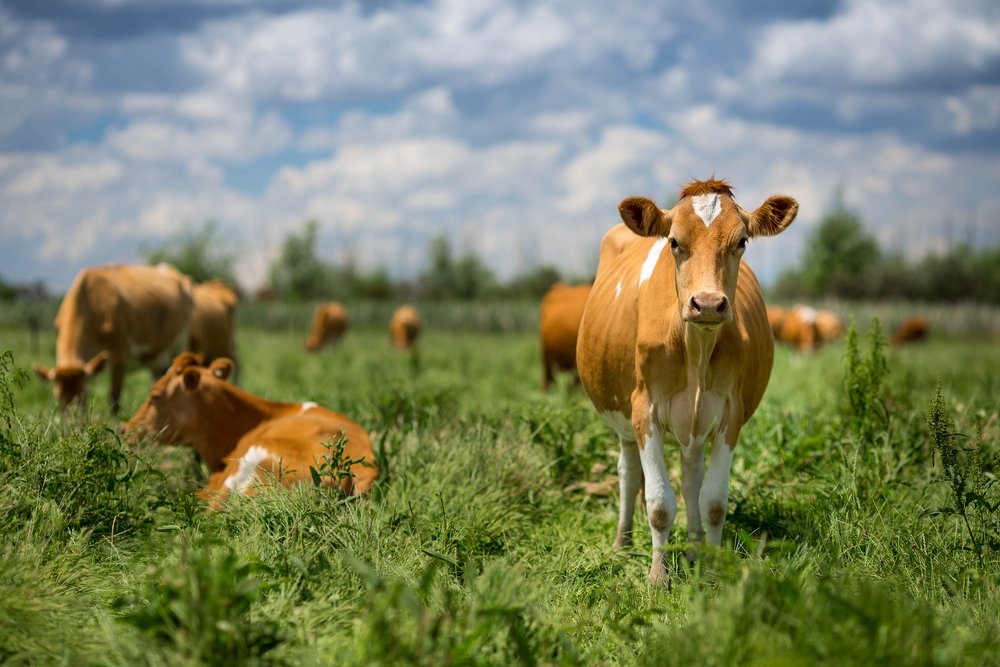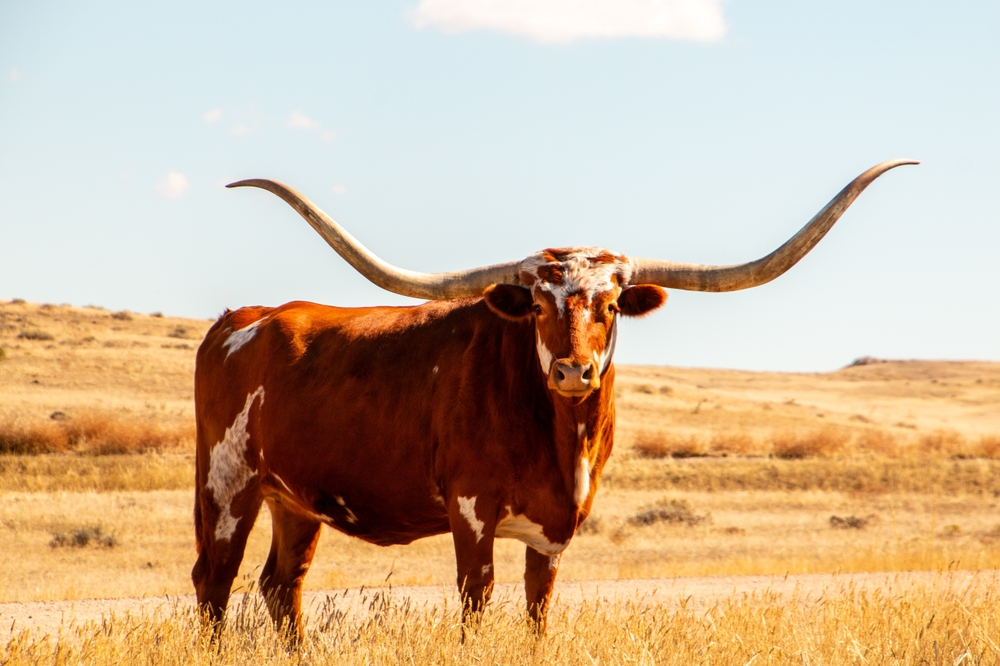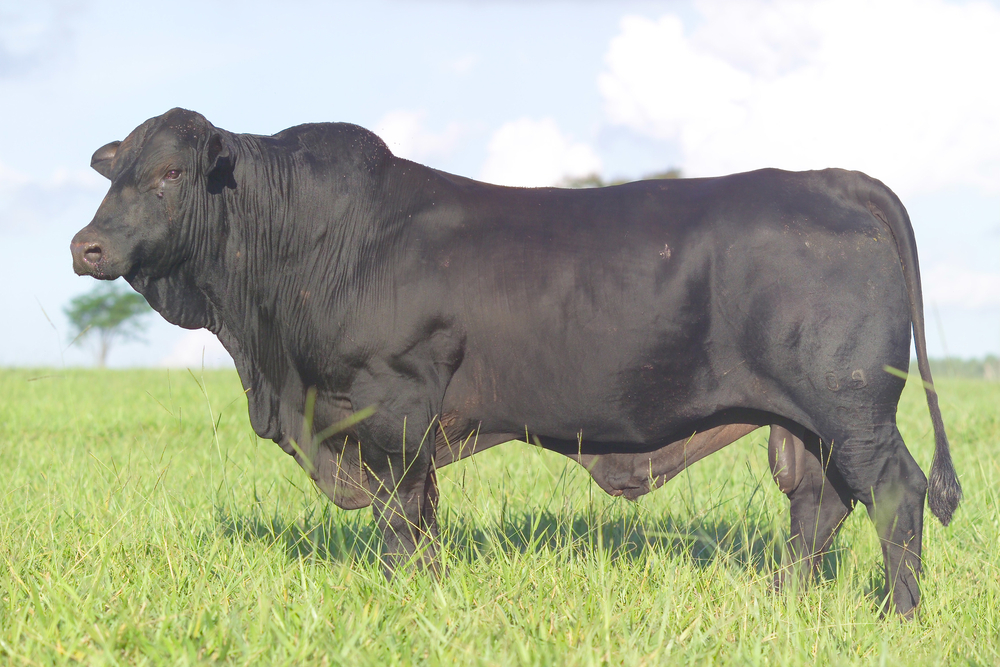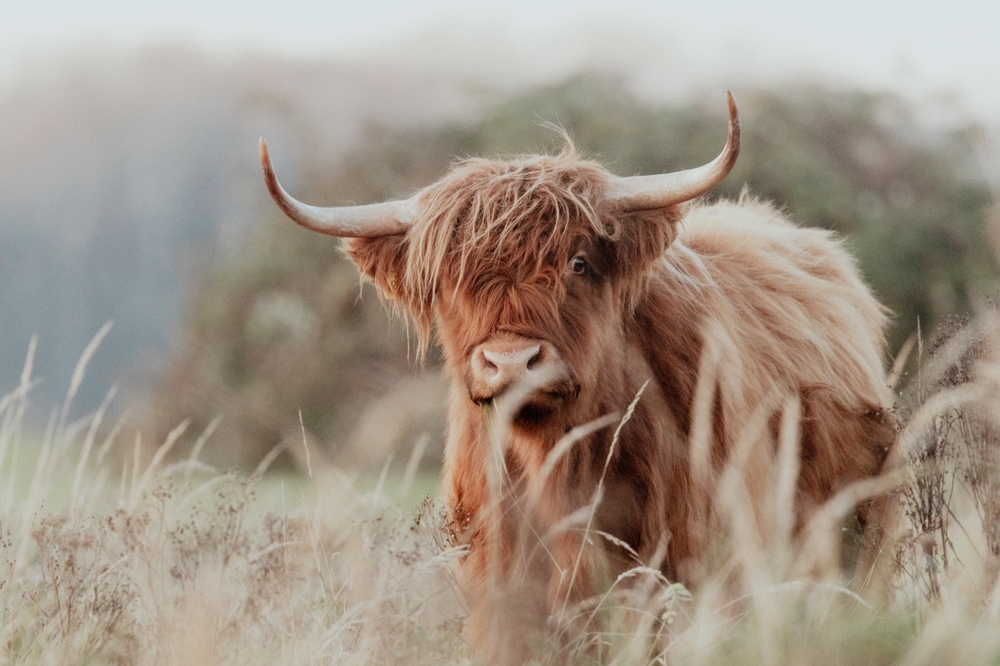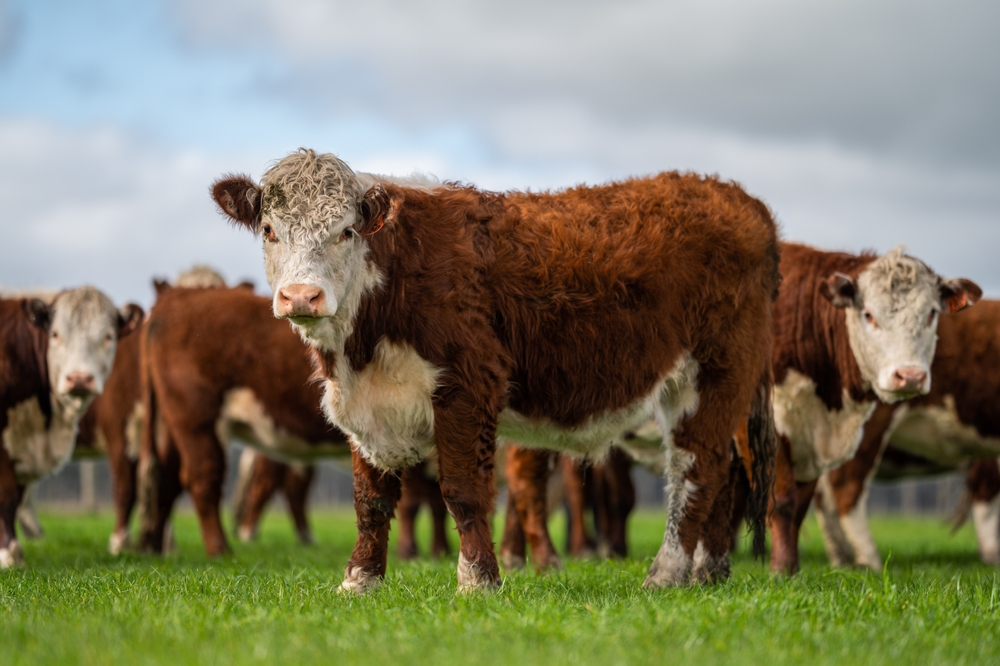The Simmental is a breed of domestic cattle (Bos taurus), most closely related to other European continental breeds such as the Fleckvieh (its German counterpart) and Montbéliarde (its French counterpart), which share similar ancestry and characteristics.
About
The Simmental (Bos taurus) is one of the world’s oldest and most versatile cattle breeds, renowned for its size, adaptability, and dual-purpose productivity. It belongs to the family Bovidae, which also includes bison, buffalo, antelope, and goats. Originating in the Simme Valley of Switzerland during the Middle Ages, the breed was developed for both milk and meat production, as well as draft work, making it a cornerstone of European agriculture for centuries.
Simmentals are large-framed cattle, with mature bulls weighing 1,000–1,300 kg (2,200–2,900 lbs) and cows 550–800 kg (1,200–1,800 lbs). They typically have a white face, pink nose, and light to dark red or gold spotted coats, though solid-colored varieties also exist. Their well-muscled bodies, strong legs, and robust build contribute to excellent beef yield, while their well-developed udders produce high milk volumes.
One of the breed’s strengths is its adaptability. Simmentals thrive in climates ranging from cold alpine pastures to tropical grasslands, and they are efficient grazers capable of maintaining condition on varied forage. Their calm temperament, fertility, and strong maternal instincts make them easy to manage and highly productive in both purebred and crossbreeding systems.
In beef production, Simmentals are valued for their rapid growth rates, high carcass yields, and well-marbled meat. In dairy settings, they provide substantial milk volumes with good butterfat and protein content, often used in cheese and yogurt production. Crossbreeding with Simmentals is popular worldwide to improve growth performance, carcass quality, and milk yield in other cattle lines.
Today, Simmentals are found in over 70 countries and remain a preferred breed for farmers seeking a balance of meat, milk, and work potential. Their combination of productivity, adaptability, and longevity ensures their continued importance in global livestock systems.
Physical Characteristics
Simmental cattle are a large-framed, versatile breed valued for both beef and dairy production, known for their size, strength, and distinctive markings:
-
Coat: Short, sleek hair in a range of colors, traditionally light to dark red with white patches on the face, underbelly, and legs; solid-colored and black Simmentals are also common in modern herds.
-
Head: Broad forehead with a straight profile; most have a white blaze or full white face. Horns are light-colored and curve gently outward and upward, though polled (hornless) strains are common.
-
Body: Large, muscular, and well-proportioned with a deep chest, strong back, and powerful hindquarters suited for meat production.
-
Udder: Well-developed and balanced in dual-purpose strains, supporting high milk yields.
-
Skin: Loose and pliable, aiding in heat dissipation.
-
Tail: Long, ending with a tuft of coarse hair.
Size:
-
Length (Body): Approximately 8 to 9 ft (2.4 to 2.75 m) from head to rump.
-
Shoulder Height: Around 4.8 to 5.3 ft (1.45 to 1.6 m).
Weight:
-
Adult Female (Cow): Typically 1,200 to 1,800 lbs (545 to 820 kg).
-
Adult Male (Bull): Usually 2,200 to 2,800 lbs (1,000 to 1,270 kg).
Simmental cattle’s impressive size, adaptability, and dual-purpose capabilities have made them one of the most widely distributed and genetically influential cattle breeds in the world.
Reproduction
Simmental cattle are known for their strong fertility, calving ease, and adaptability to both beef and dairy production systems:
-
Mating and Breeding Season:
-
Can breed year-round, though seasonal breeding is often practiced to match calving with pasture availability.
-
Both natural service and artificial insemination (AI) are common, with AI widely used to improve genetics for either beef or dairy traits.
-
-
Gestation:
-
The gestation period averages 283 days (about 9 months), consistent with most cattle breeds.
-
-
Birth and Calving:
-
Generally give birth to a single calf; twins occur occasionally.
-
Calving ease is a hallmark trait, with relatively low calf mortality rates and strong maternal instincts.
-
-
Calf Characteristics at Birth:
-
Calves typically weigh 80 to 110 lbs (36 to 50 kg), slightly heavier than some breeds but with a body shape that allows smooth delivery.
-
Known for vigor, standing and nursing quickly after birth.
-
-
Maternal Care:
-
Cows produce ample milk, supporting excellent calf growth rates.
-
Calves are usually weaned at 6 to 8 months of age, with some beef operations extending to 9 months for heavier weaning weights.
-
-
Maturity and Breeding Readiness:
-
Heifers can be bred at 15 to 18 months, aiming for first calving around 24 months.
-
Bulls are typically ready for breeding at 18 months, reaching peak fertility between 3 and 6 years.
-
The Simmental’s fertility, calving ease, and strong maternal performance have made it a favorite for crossbreeding programs worldwide, improving both herd productivity and calf quality.
Lifespan
Lifespan
-
In Commercial Beef or Dairy Operations:
Simmental cattle generally live 10 to 12 years, though many are retired earlier for economic reasons once milk production declines or reproductive performance decreases. -
In Pasture-Based or Low-Stress Systems:
With good forage, minimal production pressure, and attentive care, Simmentals can live 15 to 18 years, remaining productive for much of that time. -
In Ideal or Sanctuary Conditions:
Without production demands, some Simmental cattle have been known to live 20 years or more, though this is rare outside non-commercial settings.
Threats to Longevity:
-
Production Stress: High milk yields or rapid growth demands can shorten working life.
-
Reproductive Wear: Frequent calving intervals may reduce breeding longevity.
-
Nutrition & Forage Quality: Poor diet can impact health, especially in large-framed breeds with higher maintenance needs.
-
Disease & Parasites: While hardy, they still require regular health and parasite management.
Simmentals’ balanced temperament, adaptability, and strong constitution often give them a longer productive life than many other high-performance cattle breeds when managed well.
Eating Habits
Simmental cattle are versatile feeders with nutritional needs that reflect their dual-purpose beef and dairy potential:
-
Primary Diet:
-
Graze on pasture grasses such as ryegrass, timothy, orchardgrass, and clover.
-
Consume legumes like alfalfa for protein-rich forage.
-
In winter or dry seasons, fed hay, silage, and haylage to maintain condition.
-
-
Supplemental Feeding:
-
In beef finishing systems, often provided with grain rations (corn, barley, oats) to promote weight gain and marbling.
-
In dairy-focused herds, receive concentrates and mineral supplements to support high milk production.
-
-
Forage Efficiency:
-
Large-framed but efficient grazers that convert both high- and moderate-quality forage into meat or milk effectively.
-
-
Water Needs:
-
Require consistent access to fresh water; lactating cows may consume 30 to 50 gallons (114 to 190 liters)daily.
-
-
Feeding Behavior:
-
Graze for several hours in the morning and late afternoon, resting and ruminating during the hottest part of the day.
-
Simmentals’ adaptability to different feeding systems, from intensive dairy barns to extensive pasture grazing, is a major reason for their global popularity.
Uniqueness
The Simmental (Bos taurus) is one of the world’s oldest and most widespread cattle breeds, prized for its adaptability and productivity:
-
Dual-Purpose Excellence: Historically bred for both milk and beef, Simmentals excel in either specialized dairy or beef production systems, making them a true multi-purpose breed.
-
Impressive Size & Growth Rates: Large-framed with rapid growth and high feed efficiency, producing heavy weaning weights in beef herds.
-
Strong Maternal Traits: Noted for high fertility, calving ease, and abundant milk, resulting in healthy, fast-growing calves.
-
Global Distribution: Originated in the Simme Valley of Switzerland and now found on every continent, adapted to climates ranging from tropical to alpine.
-
Genetic Influence: Widely used in crossbreeding to improve milk yield, growth rates, and hybrid vigor in other breeds.
-
Distinctive Appearance: Traditional white-faced red-and-white pattern, though modern lines include solid colors such as black and red.
-
Longevity & Adaptability: Capable of long productive lives in both intensive and extensive systems.
The Simmental’s combination of size, versatility, and global adaptability has made it one of the most influential cattle breeds in modern agriculture.
Be the First to Share Photos of This Species.
FAQ’s
1. What is the closest species to the Simmental?
2. How does the Simmental compare to other cattle breeds?
Simmentals excel in size, versatility, and maternal traits. Compared to Angus, they generally produce larger carcasses and more milk for calf growth. Compared to Holsteins, they yield less total milk volume but have better beef quality and dual-purpose utility. They also have better growth rates and feed efficiency than many British beef breeds while maintaining calving ease.
3. What national parks provide the best chances to see a Simmental?
Simmentals are domesticated and typically found on farms and ranches, but they may be seen grazing in agricultural areas bordering protected lands, such as:
-
Berner Oberland region near Swiss Alpine parks (Switzerland) – home to traditional Simmental herds.
-
Banff National Park area (Alberta, Canada) – surrounding ranchlands sometimes keep Simmental-cross cattle.
-
Great Smoky Mountains National Park region (Tennessee/North Carolina, USA) – nearby farms may raise Simmental or Simmental-cross herds.



































































